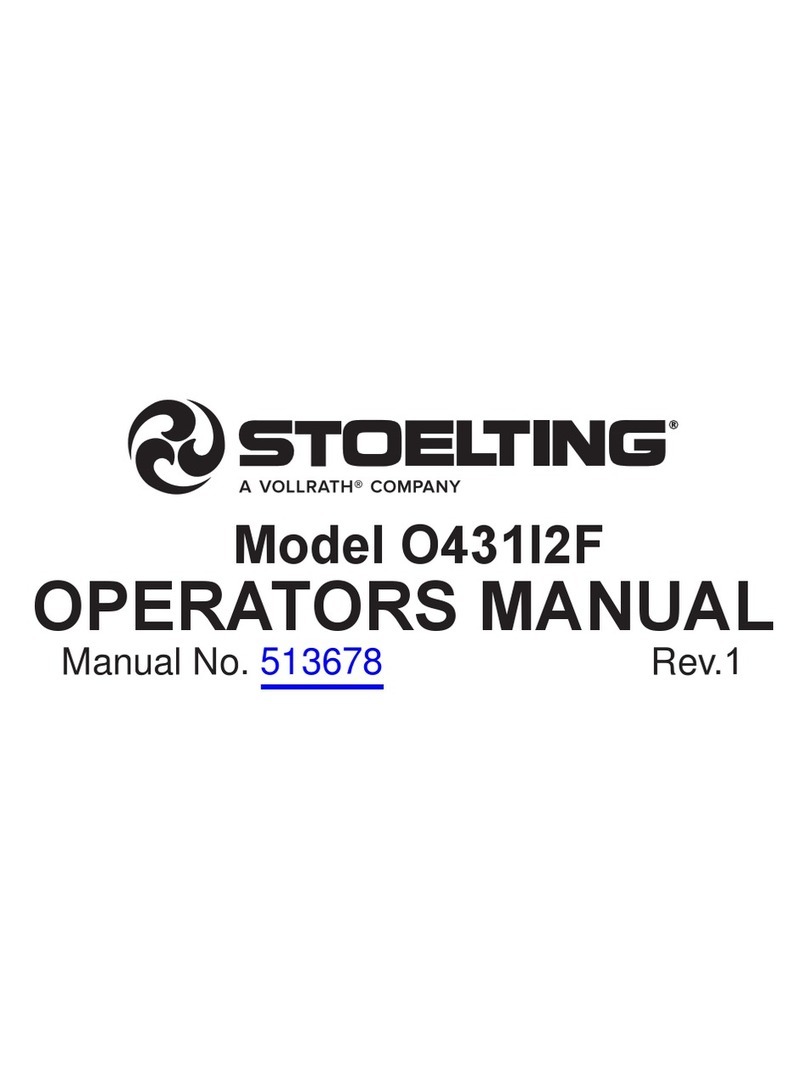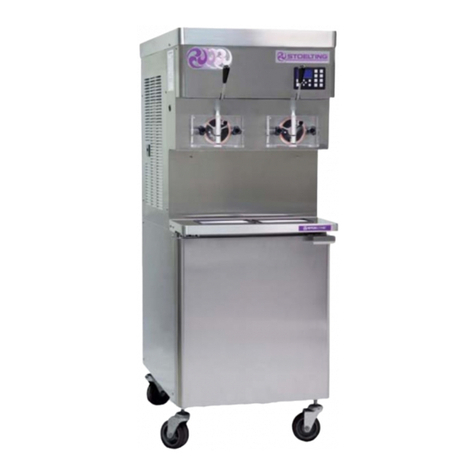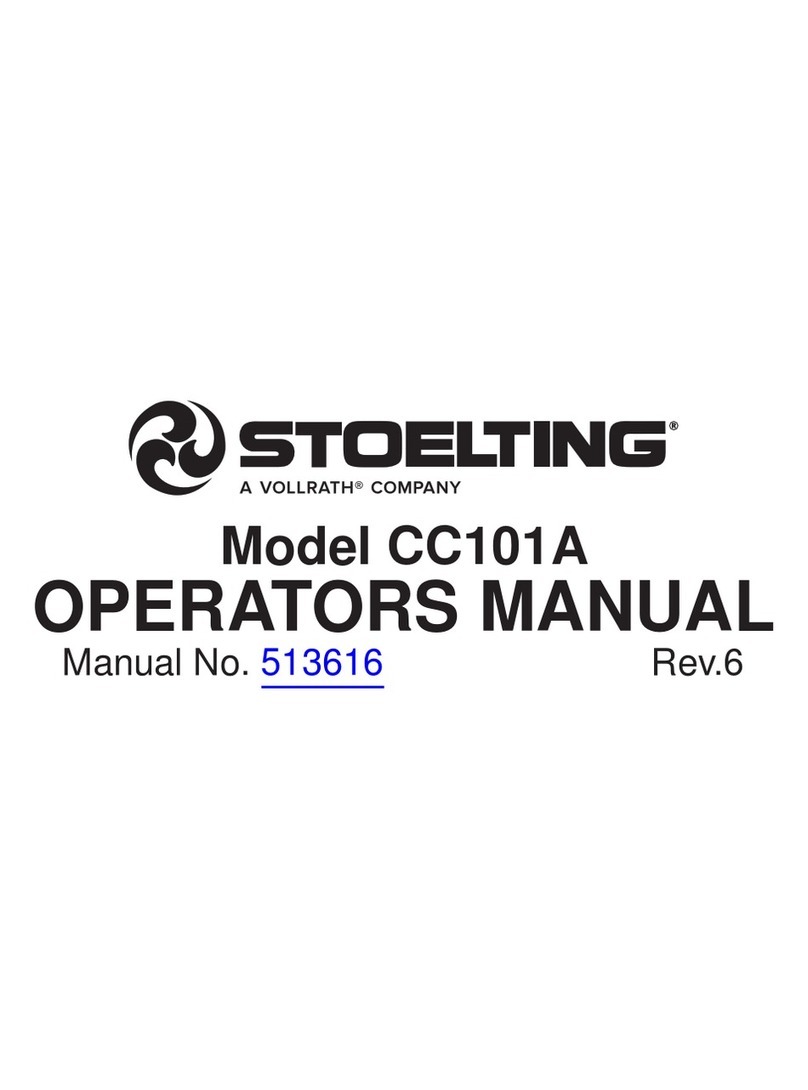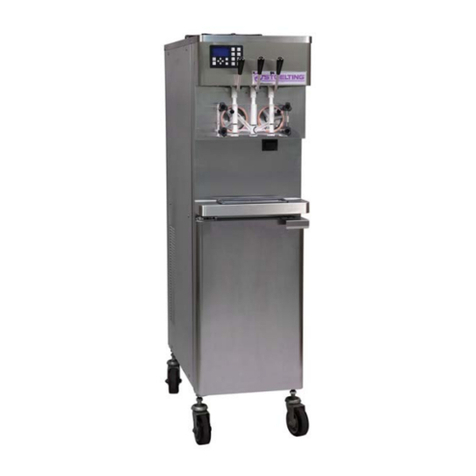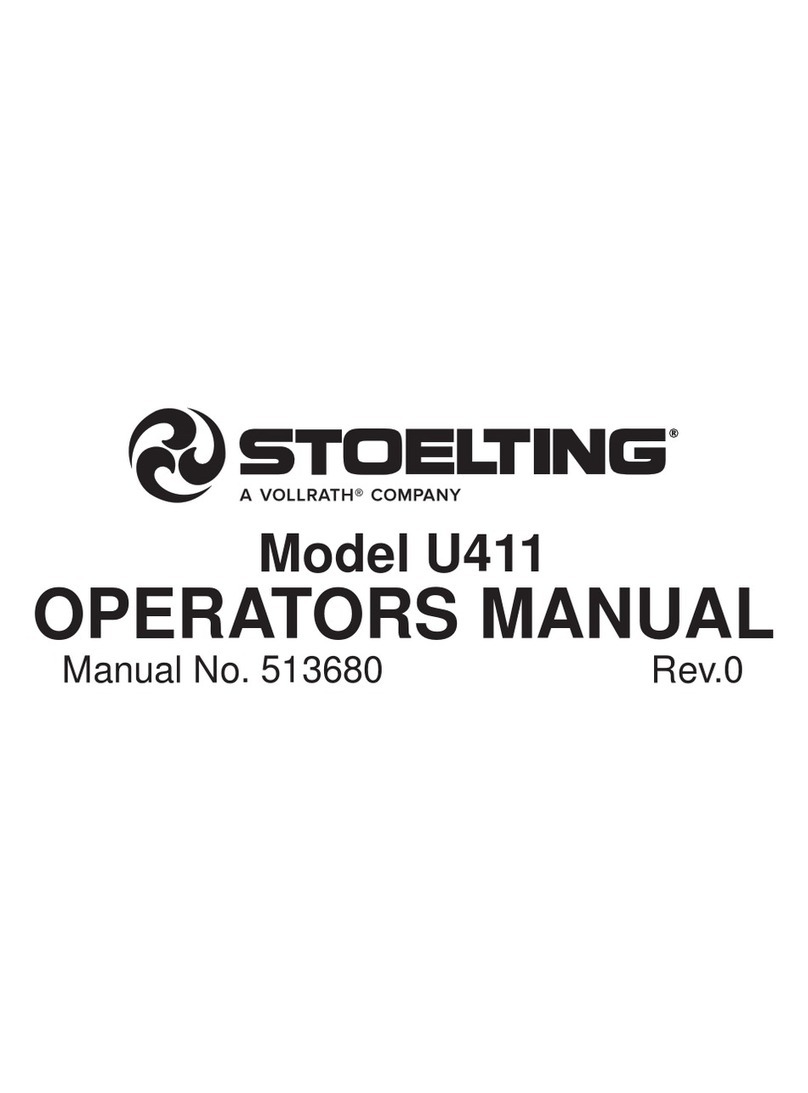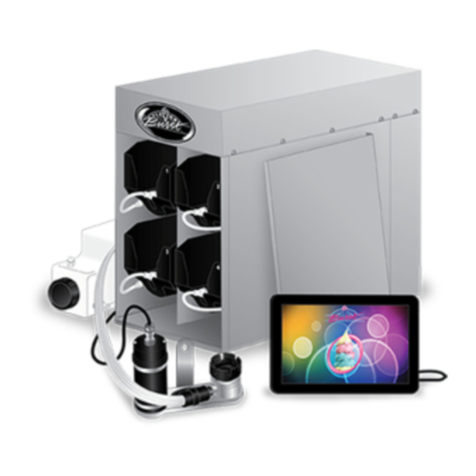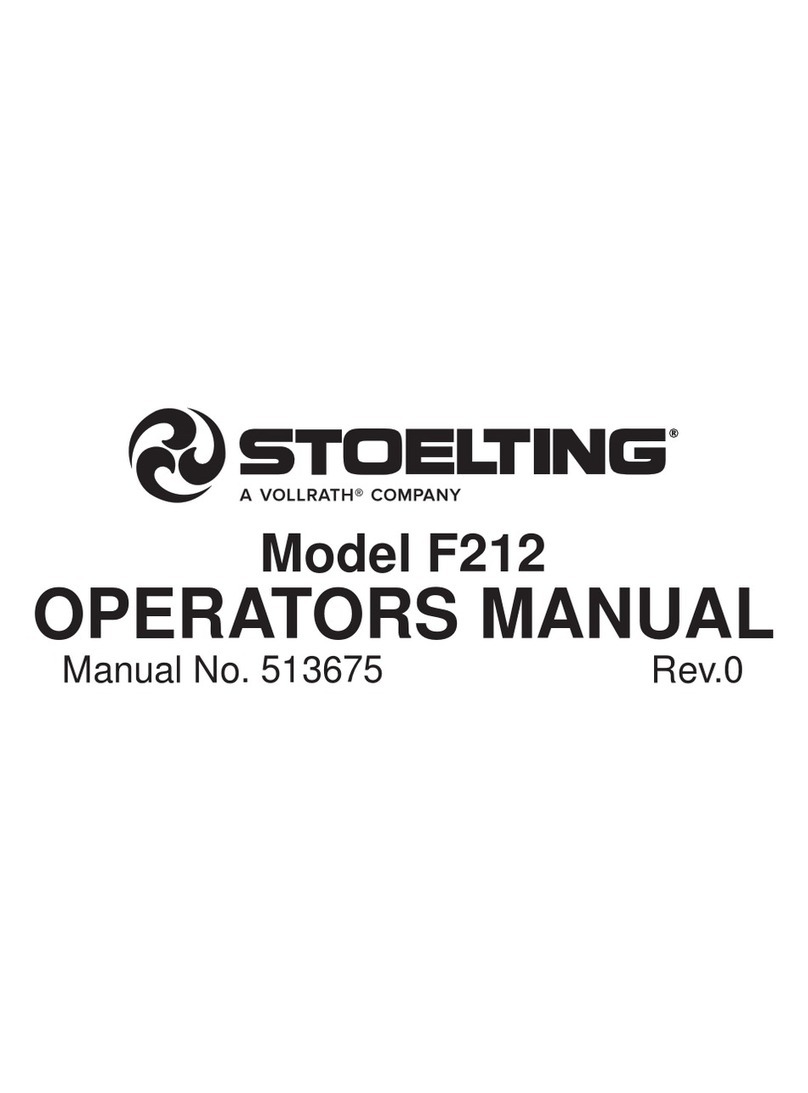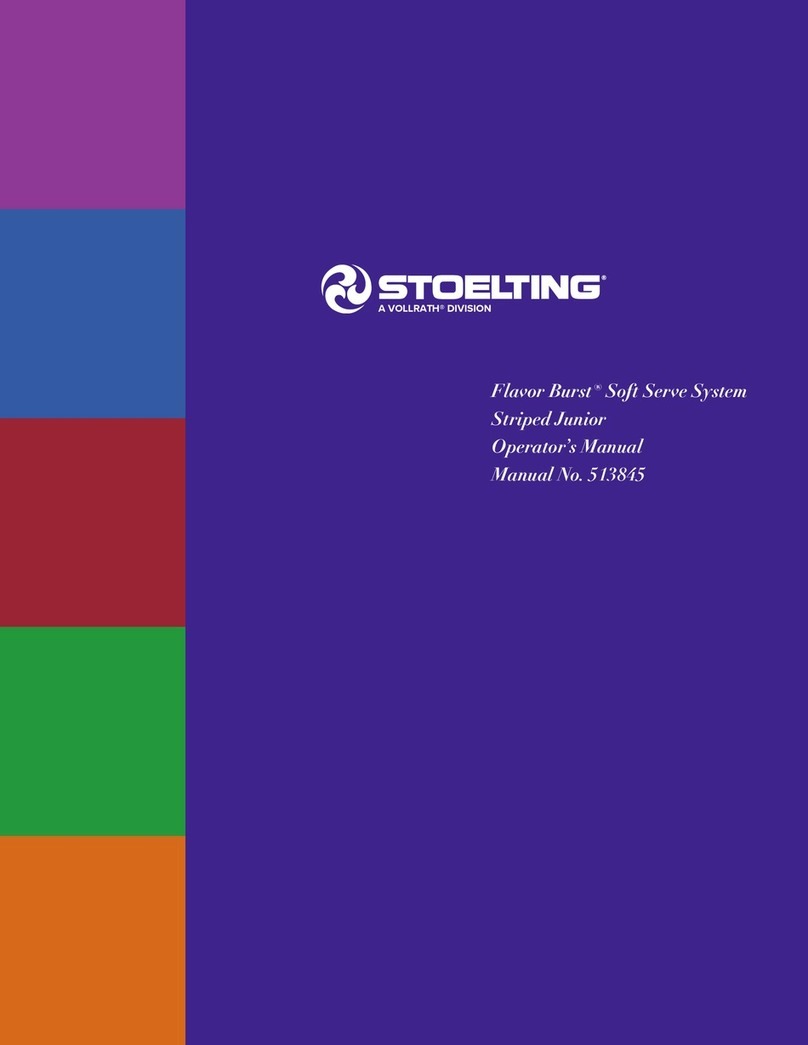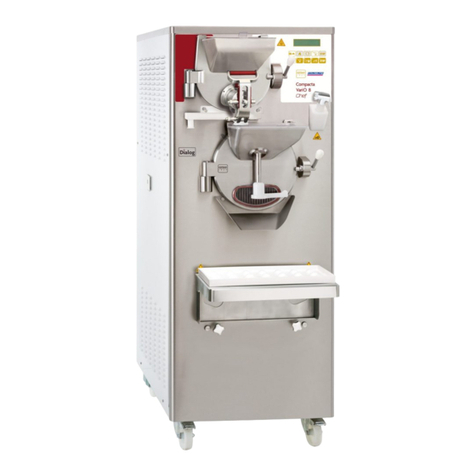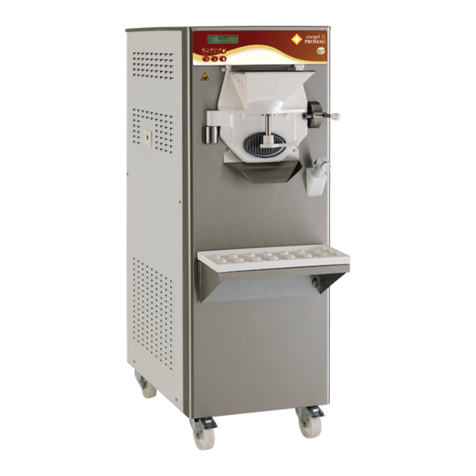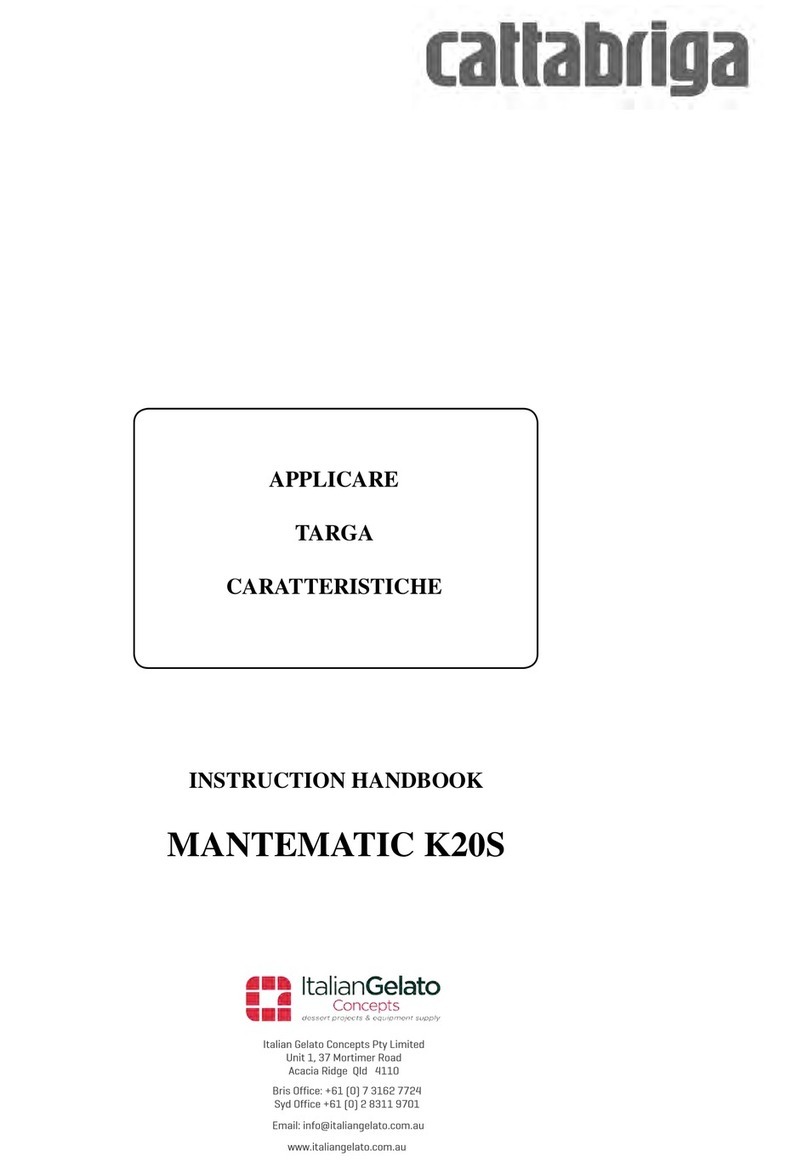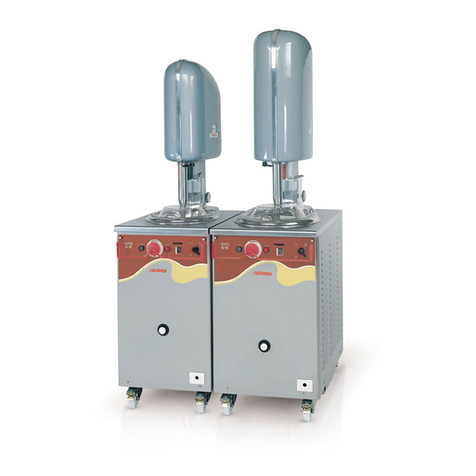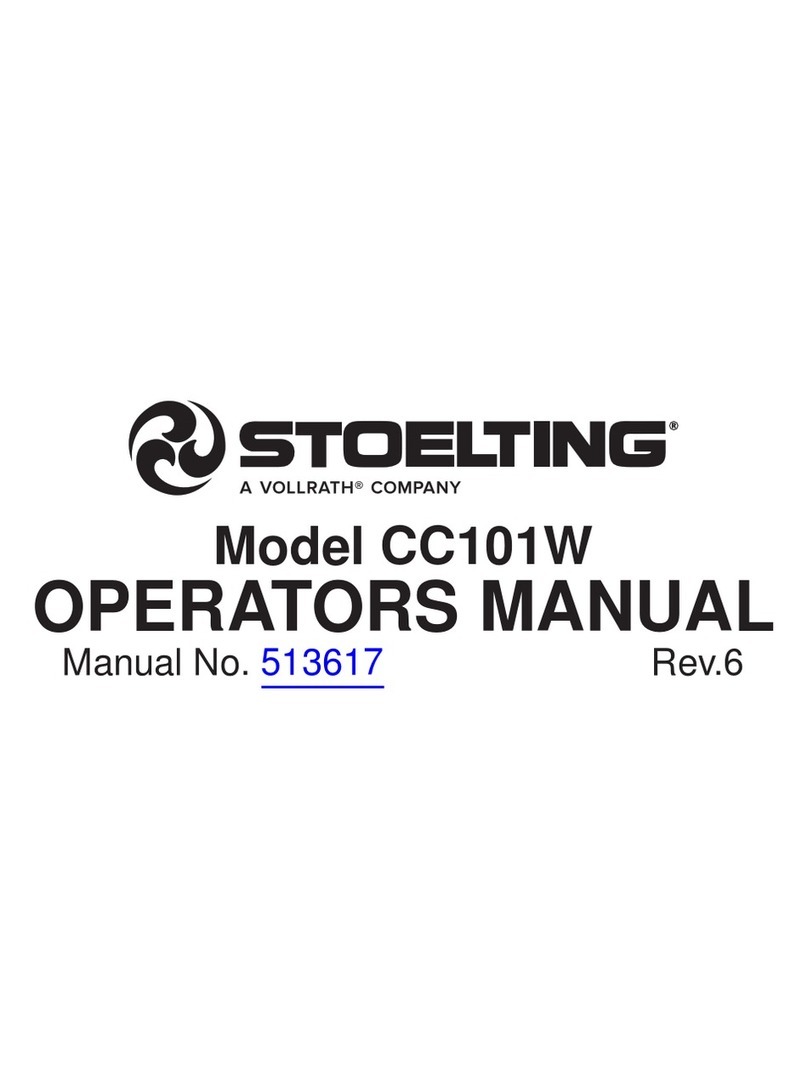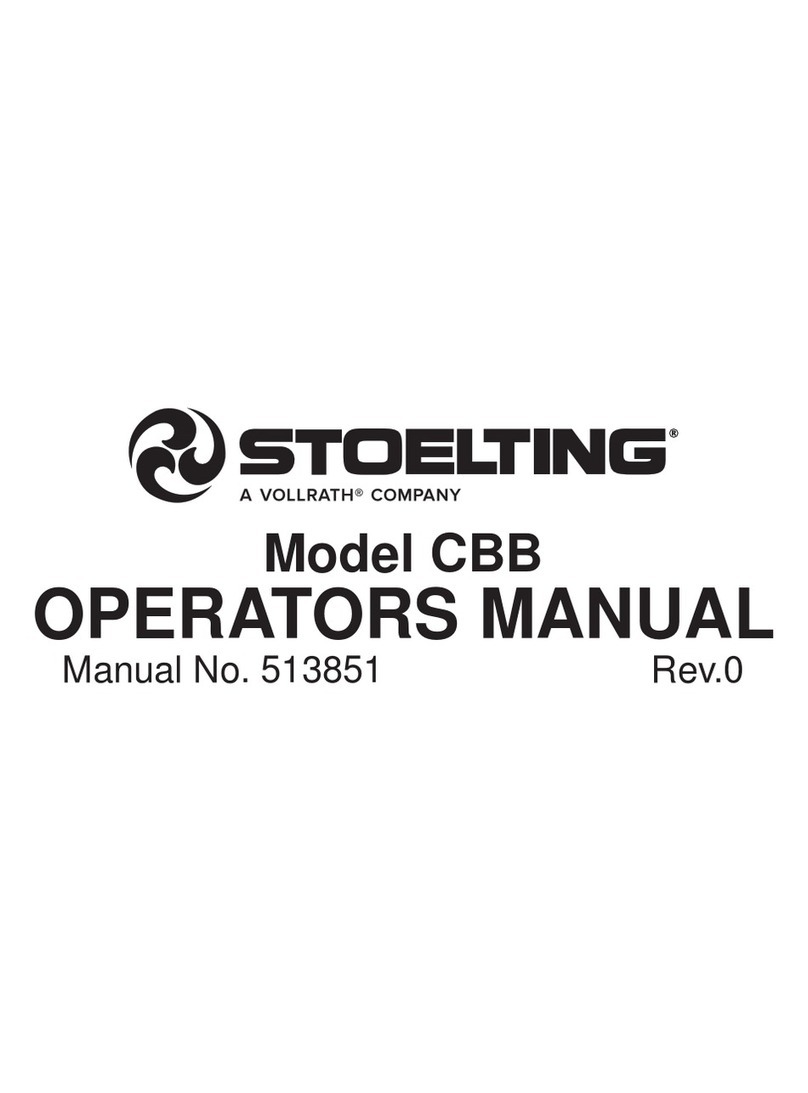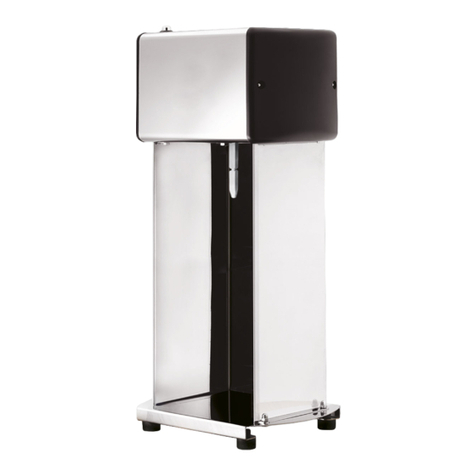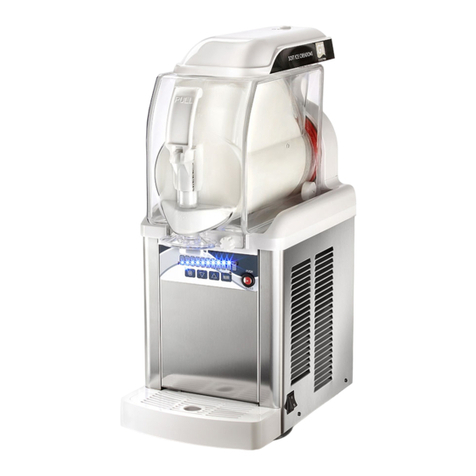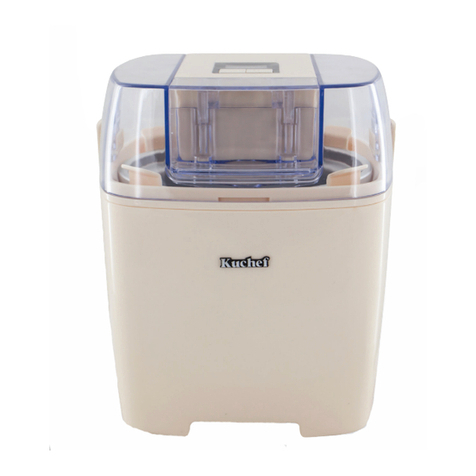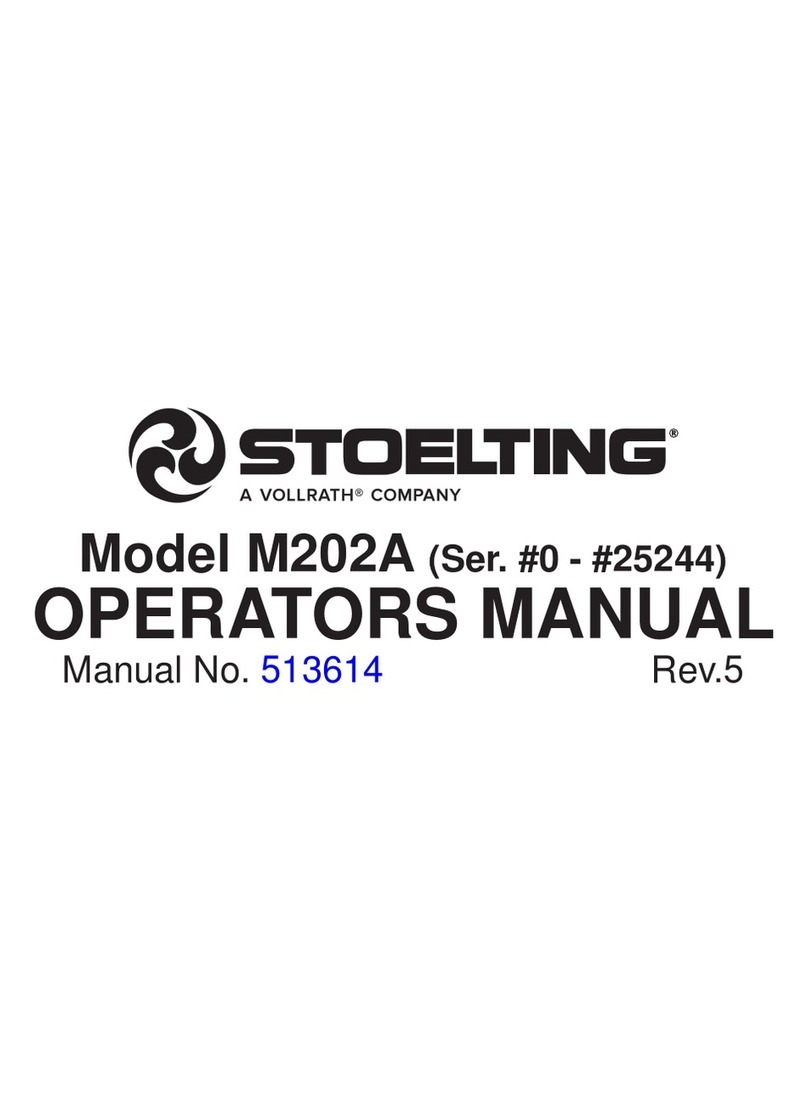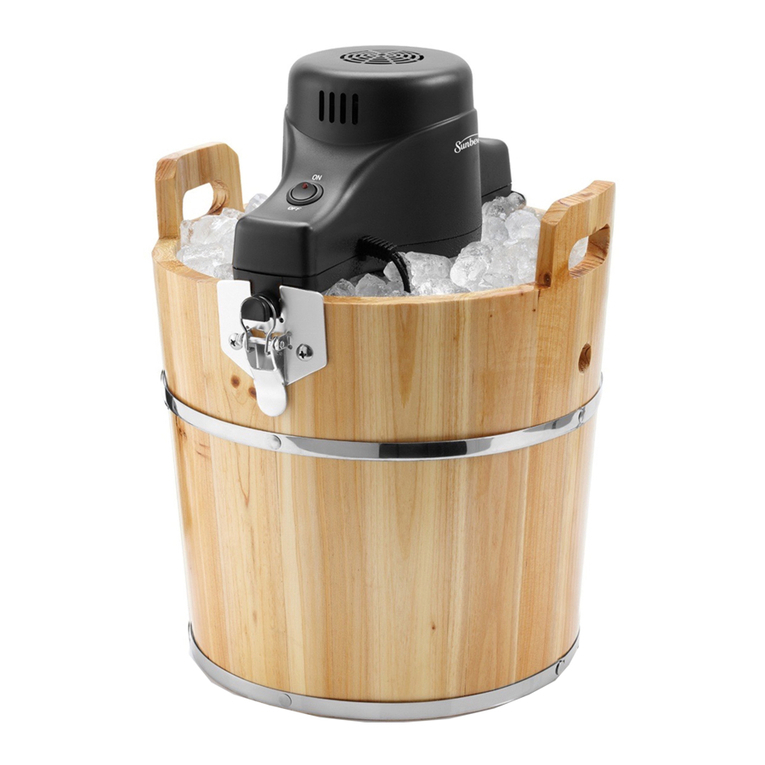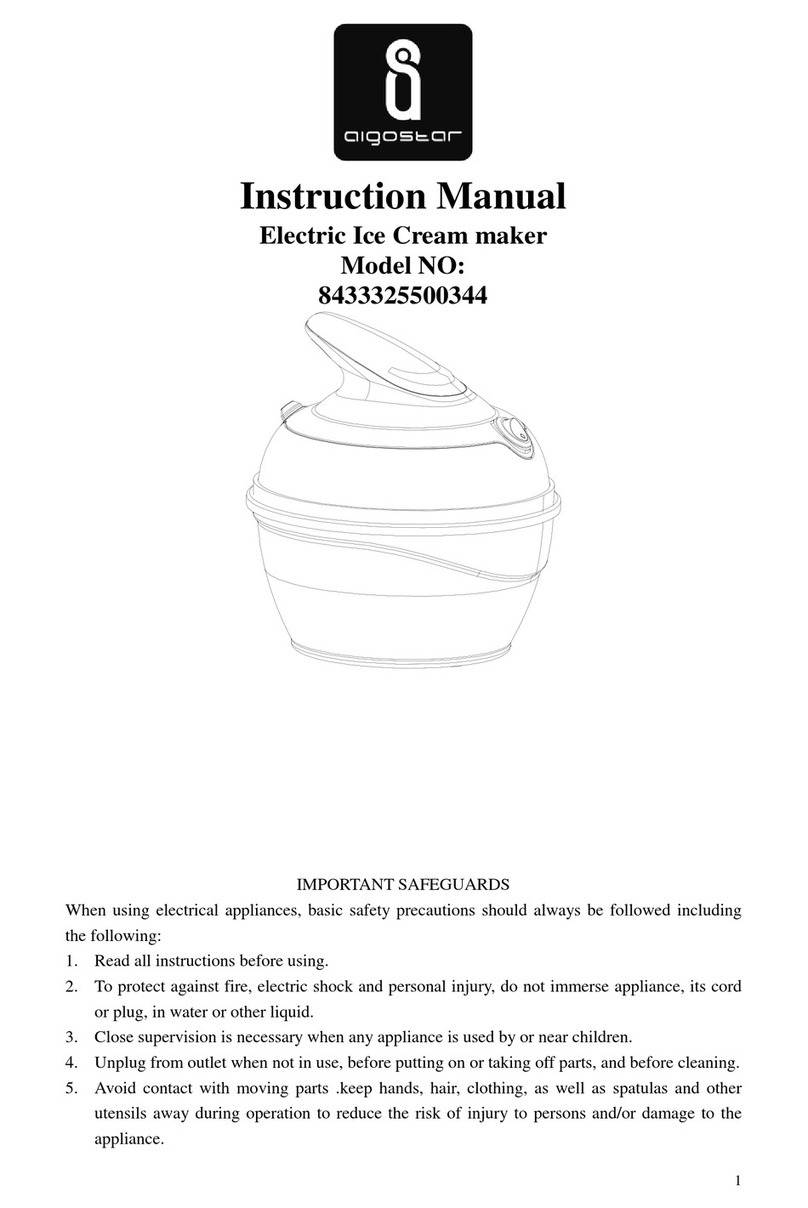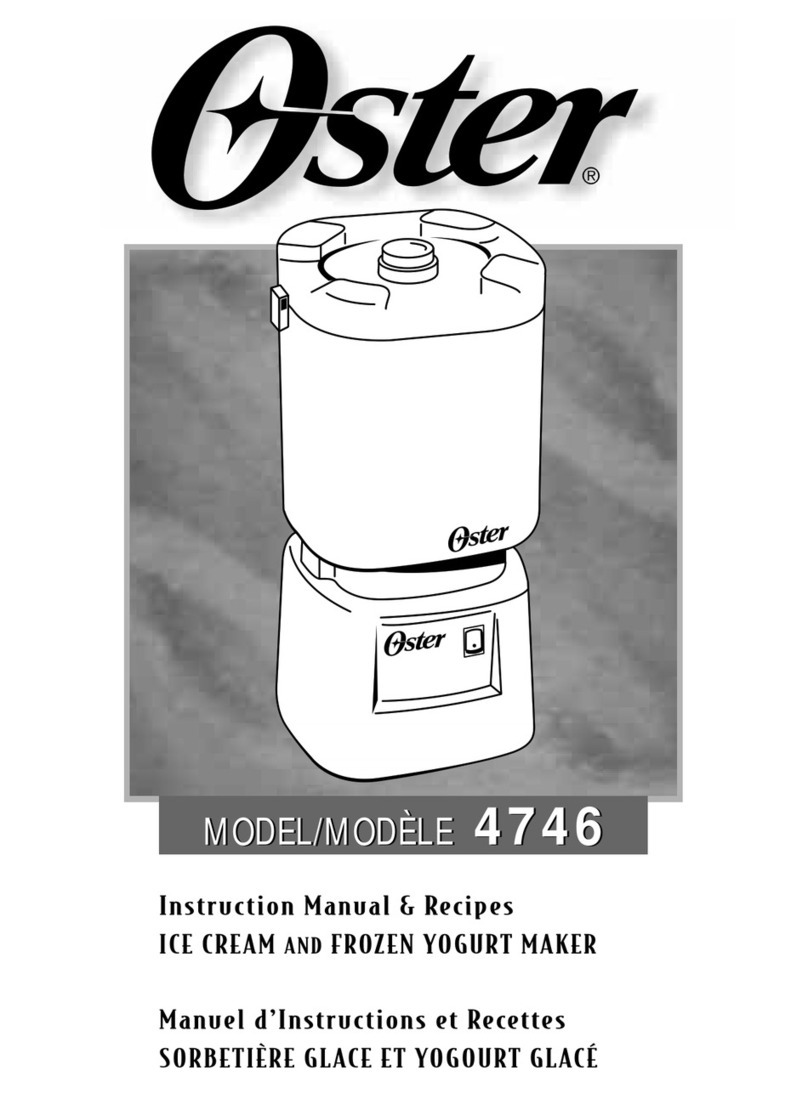
3
1.3 MODES OF NORMAL OPERATION
Following are details of the operational modes of the
IntelliTeccontrol. NOTE:
Thepresetamounts,times,andtemperatureslisted
below are references to actual settings on the
IntelliTec control. Refer to Table 1-1 on page 7 for
details on each setting.
A. INITIAL STATUS
When the Main Freezer Power and Freezing Cylinder
switches are placed in the ON position, the machine will
startinthe“Sleep1 Mode". The display will read"Sleep1
Mode".Thecontrolwilleventuallymoveintothe“Sleep2”
mode if the PUSH TO FREEZE button is not pressed.
WhenthePUSHTOFREEZEbuttonispressedthecontrol
willmovetothe“ServeMode”.
B.SERVEMODE
WhenthePUSHTOFREEZEbuttonispressedoraspigot
handleispulled,the“ServeMode”begins.Thedrivemotor
starts,andafter a 3 seconddelay, the compressorstarts.
Thedisplayreads“FREEZING”onthetoplineandabaron
the bottom line increases with product consistency. A
toroid on the IntelliTec control senses increasing drive
motor amperage as the product comes to consistency in
thefreezingcylinder.Whenthecontrolsensestheproduct
is at 75% of consistency, the display will read "SERVE",
theamberLEDwillgoout,andthegreenLEDwillflash.At
this time, product can be served from the machine. The
drive motor and compressor will continue to run until the
toroidreadsapresetvalue(CutOutamps).Whenthetoroid
readstheCutOutampsonthedrivemotor,thecompressor
turnsoffandthegreenLEDwillremainlit.Aftera3second
delay,thedrivemotorturnsoff.Theproductinthefreezing
cylinderis now atserving temperatureand consistency.
After product is at consistency, the IntelliTec control
continuously monitors refrigerant temperature through a
thermistor mounted on the side of the freezing cylinder.
Whenthetemperatureincreasestoapreset amount(Cut
In T), a 3-second drive motor pre-stir analyzes product
consistency. The pre-stir check is also performed each
timethespigothandleisopened.Thischeckpreventsover-
freezing of product, especially during frequent, small vol-
ume draws. If the product requires a freezing cycle, the
control will start the cycle.
During the “Serve Mode”, a stir cycle starts. This cycle is
independent of the freezing cycle and is based on preset
times(StirOnandStirOff).Thestircyclepreventsproduct
separation.Ifafreezingcycleisinitiated,thetimerisreset.
In addition to the "Serve Mode" freezing cycle, there is a
freezingcyclebasedonapresettime(DftOffTime).Ifthis
time is attained without a freezing cycle, the control will
automatically start a freezing cycle.
The machine will remain in “Serve Mode” until the cycle
countsettingisattained.Thecyclecountisthenumberof
activefreezing cyclesand isbased ona preset value
(Cycles).Oncethecyclecount hasbeenreachedwithout
user interruption, the control will move into the "Standby
Mode".
If the PUSH TO FREEZE button is pressed or a spigot
handleispulled,thecyclecountisresetandthecontrolwill
movetothebeginningofthe"ServeMode".RefertoFigure
1-3foragraphicalrepresentationofthe"ServeMode".
C.STANDBYMODE
Ifnoproducthasbeendrawnfromthespigotandthepreset
numberofactivefreezingcyclesismet,thecontrolmoves
intothe“StandbyMode”.In "StandbyMode",thefreezing
cycleisbasedonpresettimers(OnTimeandOffTime),and
prevents ice crystals from building up in the product.
Becausetheproductremainspartiallyfrozen,itcanquickly
returntoservableconsistencywhenthePUSHTOFREEZE
button is pressed.
During “Standby Mode”, the stir cycle runs. This cycle is
basedonpreset,timedintervals(StirOnandStirOff)and
preventsproductseparation.
The"StandbyMode"maintainsproductqualityduringslow
times,whileminimizingreactivationtime.Thismodelasts
for a preset time (Stb Time). Once this time has been
reachedwithoutuserinterruption,thecontrolmovesinto
Figure 1-3 Serve Mode
Figure 1-4 Standby Mode
